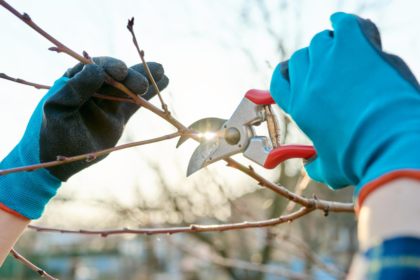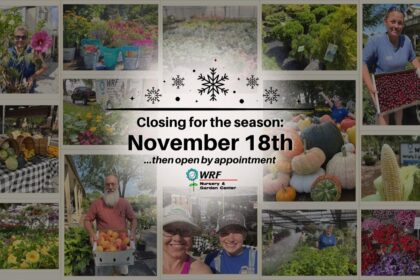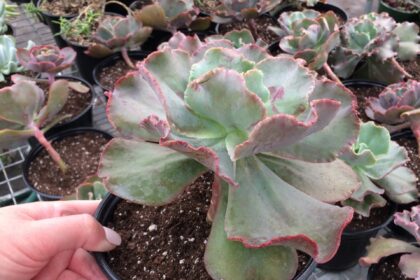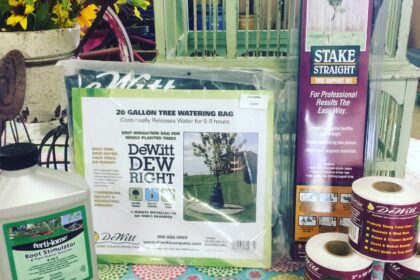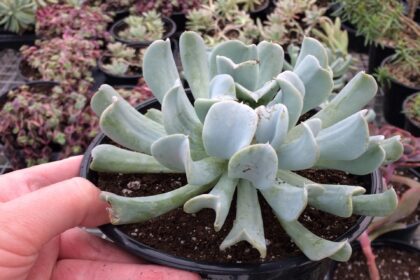
Roses are a time-tested garden favorite. For this reason, our garden center carries many easy-care varieties that are both self-cleaning and disease-resistant.
All rose bushes need some attention to keep them happy and healthy. While we try to provide helpful advice, many of the care tips in this article are generalized. Please feel free to ask an associate for specific rose care help by calling 219-462-TREE. Additionally, if you know the type of rose you purchased, we have provided links near the bottom of this article where you can find additional tips from the growers themselves.
Watering
During the summer months in particular, deep watering is very much encouraged. The exact amount of watering needed will vary as it depends on if it has recently rained, or how well the soil drains. If it has not rained for a while, go ahead and flood the base of your plant with several gallons of water. You can repeat the next morning if your soil is quick to drain. In general, you can repeat this every 10-14 days, but you should become familiar with your soil drainage and plant’s watering needs to adjust accordingly. Overhead sprinkler watering or daily watering is not recommended.
During the fall, keep track of rainfall amounts and water as needed until the ground freezes. The goal is to prevent your rose bushes from going into winter dehydrated. Hydration is key to preventing winter burn damage.
Pruning
Self-cleaning rosebushes, meaning the varieties that don’t develop rose hips, do not require deadheading. Some varieties of reblooming roses do require deadheading to rebloom throughout the season. To deadhead, use sharp cutters to cut the spent bloom back to the first five-leaflet. Lightly prune roses by deadheading throughout the growing season will help to keep a groomed appearance.
Old-fashioned and heirloom climbing roses usually bloom on old growth, so only prune those types after they bloom.
[Additional resource: https://web.extension.illinois.edu/roses/prune.cfm ]Disease Prevention
To avoid powdery mildew, black spot, or other fungal diseases, it is best to water plants at ground level in the morning. Prune your rose bush to allow air to circulate through the foliage. It is also important to remember to sanitize your pruners and gloves, particularly after pruning any infected plants.
If you do notice signs of infection, remove infected leaves immediately and begin a preventative spray treatment of neem oil or fungicide. It is important to follow the label instructions for application amounts and times. In most cases, a 3-in-1 spray product is all you need to serve as an insecticide, fungicide, and miticide.
Pests
Most insect garden “pests” can be kept controllable with Neem oil or insecticidal soap. You can also remove Aphids by simply rinsing them off with a water hose. Often times you can hand-pick Japanese Beetles off your bushes as well.
Additional Resources
We’ve compiled some grower links for additional advice from the growers themselves.
Rose Care Calendar
April/May
After the last frost date (which is typically the end of April for our region), clear away any winter insulation. First prune your bushes to remove any winter damage. Hybrid tea roses can be pruned back . Apply fertilizer.
May/June
After the first bloom period, fertilize your rose bushes again.
July
Fertilize roses for the last time this year with a liquid 20-20-20 fertilizer. Fertilizing after August 1 is not recommended as it could leave the plant susceptible if new growth gets damaged by frost later in the season.
Continue to deadhead roses cutting back to the first set of five leaflets.
November
Consider mounding a foot to foot-and-a-half of lightweight peat moss or compost at base of roses. Some people opt to cage their rose bushes with chicken wire and leaves.
Hybrid tea roses can be cut down to about your knee in length. Other roses can be pruned in the spring.



